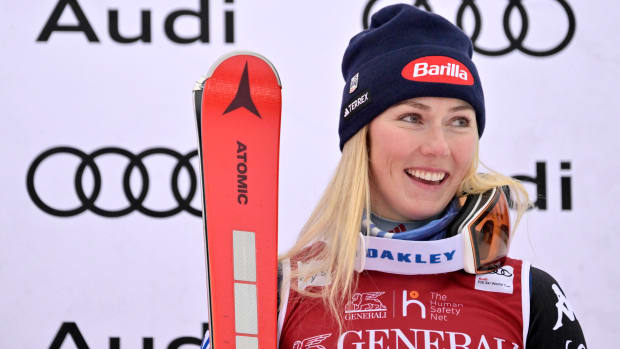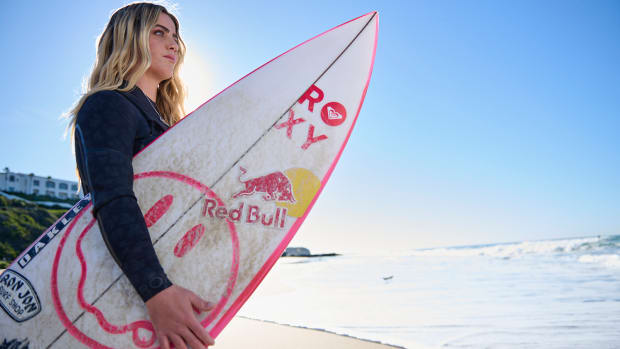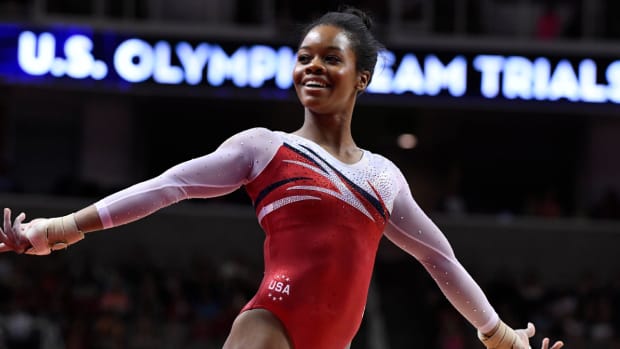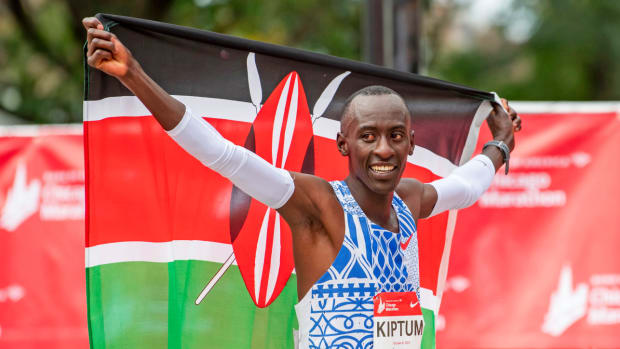Respect the Sheep: Behind the Design of Beijing’s Daunting Sliding Track
BEIJING — For bobsled, luge and skeleton racers, the twists and turns of sliding tracks are typically abbreviated by their numerical order: Curve 1, Curve 2, Curve 10 and so forth. But certain sections pose such fearsome challenges that they have earned special monikers too.
For example, British Columbia’s Whistler Sliding Centre is home to Slingshot, Shiver and Thunderbird. There is the Devil’s Highway in Lake Placid, N.Y.; the Devil’s Dyke near St. Moritz, Switzerland; and the unofficially dubbed Doodles outside Königssee, Germany. "Because if you don't get those right,” Great Britain skeleton racer Laura Deas explains, “you get doodled.”
Here at the 2022 Winter Olympics, the Yanqing National Sliding Centre is no exception in its share of eye-popping, hair-bending curves. Known locally as the Flying Snow Dragon, the venue has drawn attention for its signature, 370-degree, 217-meter continuous loop at C11, aka the Spiral, which subjects athletes to four-G forces for some seven seconds and spits them out at about 75 miles per hour.
And yet the most intimidating sequence of the whole venue—unlike any other in the world, sliders say, one that has caused flocks of them thus far to tilt, wobble and at times flip clean over onto an surface so icily hard that American luger Chris Mazdzer describes it as “like marble”—happens to boast perhaps the least intimidating name possible.
As the man who designed the track himself declares with a hearty laugh, “It’s quite nasty, the Sheep.”
The origins of the Sheep date to summer 2016, when members of Beijing’s organizing committee and others paid a site visit to Yanqing and found a flock of sheep grazing in a nearby valley. Among those who took notice of this ewe dell was Uwe Deyle, a German architect and engineer whose handiwork also includes past Olympic sliding courses in Turin and PyeongChang. “A guy in our group talked to sheep,” Deyle says. “If you imagine sheep talking, he did the same back. We had a lot of fun, so we remembered the place."
The scene stuck with Deyle as he sketched out what became the National Sliding Centre, which broke ground in July 2018 and opened two years later. And while this close encounter of a herd kind didn’t directly motivate Deyle to create the undulating C13-C16 stretch that feeds into the finishing straightaway, he knew exactly what to call it in retrospect. “Respect the Sheep!” warns part of a 14-page track summary produced by Deyle’s firm this January.
“If you come out of Curve 13,” Deyle says, “it’s the neck of the Sheep, then the back, and up the tail again. My goal was not to build a highway, but to have chances to lose time at every curve. And the Sheep is maximum difficulty at maximum speed.”
Sliders concur. This is not a case of the wool being pulled over their eyes; they all know the challenge posed by the Sheep, especially a mini hump between C14 and C15. But it gives them fits anyway. “Think about when you’re driving in a car,” Mazdzer says. “You go over a hill, you get that weightless feeling. That’s kind of what we’re experiencing.” Canadian skeleton racer Jane Channell, for her part, compares the zero-gravity sensation to riding a roller coaster—except instead of buckled and lap-barred into a seat, the athletes are lying on a sled.
“Your normal steers that you think would work through there don’t work,” Channell says. "So you really have to figure out what works for your sled to cut the least amount of ice while still maintaining that speed and building pressure around the corner to whip off.”
The risk of fully flipping over isn’t as great for skeleton athletes, who compete with lower centers of gravity compared to their sliding counterparts. “You saw in the luge, they had loads of issues there, because you lose that pressure on the sled in this weightless moment,” says Great Britain’s Marcus Wyatt. “If you’re not going dead straight at that moment, it becomes difficult to control the sled.” Regardless of the event, though, there is always a danger in ramming the left wall and overcompensating to the right. “If you don’t have the perfect line out of the 13, you have to correct,” Deyle says. “However, you have to correct at a location where you almost do not have any gravity, and that will be punished. This is the Sheep's revenge.”
The key to Sheep survival? “Do not overreact,” says Wyatt’s teammate, Rupert Staudinger. “Drive the corner 13 beforehand really well, and then just have the courage to lay down and make that little slight movement to soften it.” U.S. luger Tucker West agrees: "You have to find the line that's going to allow you to come out of 13 with the straightest line possible, so that you don’t find yourself riding too fast up onto the radiuses of 14 and 15. Because it's when you take that direction, without the curve and pressure to hold onto, that it wants to flip you.”
However, despite the universal attention paid to the Sheep among Olympians—“We spent a lot of time this week watching the other sessions, just trying to figure it out,” says Brogan Crowley, who is representing Great Britain in women's skeleton—none of the athletes surveyed for this story knew what it was actually called. When told, they were all surprised.
“I thought you were going to say a dragon, or something that was terrifying,” Crowley says.
“I personally call it the Mario Kart Boulevard," Staudinger says. “I think that fits more than a sheep’s back.”
“Let’s get a cool name, like the Icy Phoenix,” Mazdzer says. “Like, ‘Oh man, the Icy Phoenix just totally ate my lunch!’”
Adds Laura Deas, another Great Britain skeleton racer, “I guess you do feel like you’re on a rodeo. Do sheep do rodeo? I don't know.”
As for the Sheep’s sire, he stops short of listing it as his favorite bit of work. “Of course, I love all my children the same,” says Deyle, who also hails from royal sliding stock: His father Werner is credited with creating the world's first artificial ice bobsleigh track, in Königssee. But, Deyle concedes, “I’m very proud of the Sheep sequence because it's new. It's invented. It's not a copy. And it worked out perfectly by demonstrating how difficult the sport is."
Just don’t bother suggesting a name change. That would not be very respectful to the Sheep.
In fact, it would be very baa-d.
More Olympic Coverage:
• Super-G Reminds Mikaela Shiffrin She Is Still Who She Thought She Was
• Chloe Kim Avoids the Pitfalls of Pressure in Beijing
• 17-Year-Old Jordan Stolz Is the Next Big Thing in U.S. Speedskating








